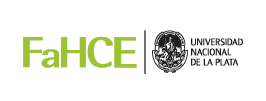Artículo
Indicadores de heterogeneidad vegetal: una herramienta para evaluar el potencial de regulación biótica en agroecosistemas hortícolas del periurbano platense, provincia de Buenos Aires, Argentina --- Indicators of vegetal heterogeneity: a tool to evaluate the potential of biotic regulation in horticultural agro-ecosystems of La Plata’ surroundings, province of Buenos Aires, Argentina
Fernández, V., Marasas, M., Sarandón, S.
Extensión:
pdf, 17 p.
Editor:
UNLP - Facultad de Ciencias Agrarias y Forestales
Fecha:
2019
Temas:
Diversidad funcional, Control de Plagas, Sustentabilidad, Enemigos naturales, Producción familiar
Descriptor geográfico:
Gran La Plata (Buenos Aires, Argentina)
Fuente:
Revista de la Facultad de Agronomía
Resumen:
El modelo productivo que predomina en el Cinturón Hortícola de La Plata, tuvo, como consecuencia impactos negativos ecológicos, económicos y sociales. Uno de los principales problemas ecológico-productivos es la incidencia de plagas y el uso creciente de pesticidas. El componente vegetal de la agrobiodiversidad puede promover mecanismos de regulación biótica que eviten la aparición de plagas, aunque la evaluación de dicho componente no es sencilla. Se construyeron indicadores para predecir, a partir del análisis de la heterogeneidad vegetal, el potencial del sistema para proveer los mecanismos de regulación biótica de plagas, y se evaluaron en dos fincas contrastantes: manejo convencional y agroecológico. Se organizaron dos categorías, que agrupan indicadores relacionados al control “Botton up” y “Top down” de plagas. Se obtuvieron 22 indicadores estandarizados y ponderados. Los indicadores propuestos resultaron apropiados para medir el potencial de regulación biótica de plagas a partir de la heterogeneidad vegetal del agroecosistema y detectar diferencias entre los dos sistemas productivos. Estas diferencias se observaron tanto en el potencial de regulación biótica en general como en sus dos dimensiones (top down - y bottom up) analizadas. Los mayores valores se observaron en el sistema de manejo agroecológico respecto al convencional. Esta herramienta constituye un aporte para encontrar soluciones al problema del control de plagas principalmente en sistemas hortícolas familiares. --- The productive model which prevails at the Horticultural Belt of La Plata, had as a consequence ecological, economic and social negative impacts. One of the main ecological-productive problems is the incidence of pests and the increasing use of pesticides. The vegetal component of the agro-biodiversity can promote mechanisms of biotic regulation that prevent the appearance of pests. But its evaluation is not simple. Indicators were developed to predict, from the vegetal heterogeneity, the potential of the system to provide the mechanisms of biotic regulation of pests, and were evaluated in two contrasting farms: conventional and agro-ecological management. Two categories were organized, which group indicators related to the control “Bottom up” and “Top down” of pests. Twenty-two standardized and weighted indicators were obtained. The suggested indicators were appropriated to measure the potential of biotic regulation of pests from the vegetal heterogeneity agroecosystem and detect differences between the two productive systems. These differences were observed both in the biotic regulative potential in general, and for its two analyzed dimensions (top down and bottom up). The highest values were observed in the agro-ecologic system with respect to the conventional. This tool represents a contribution to find solutions to the pest control problem, mainly in family horticultural systems.
Documento descargado de:
http://sedici.unlp.edu.ar/handle/10915/95450
Facultad de Humanidades y Ciencias de la Educación | Universidad Nacional de La Plata
Calle 51 e/ 124 y 125 | Edificio C Oficina 208 | (1925) Ensenada | Buenos Aires | Argentina
Teléfonos: +54 221 4236673 / 4230125 / 4230127 (Internos: Recepción 1262 Personal de Apoyo 1343) | ISSN sitio web: 3008-7589
Contactanos:
idihcs@fahce.unlp.edu.ar











